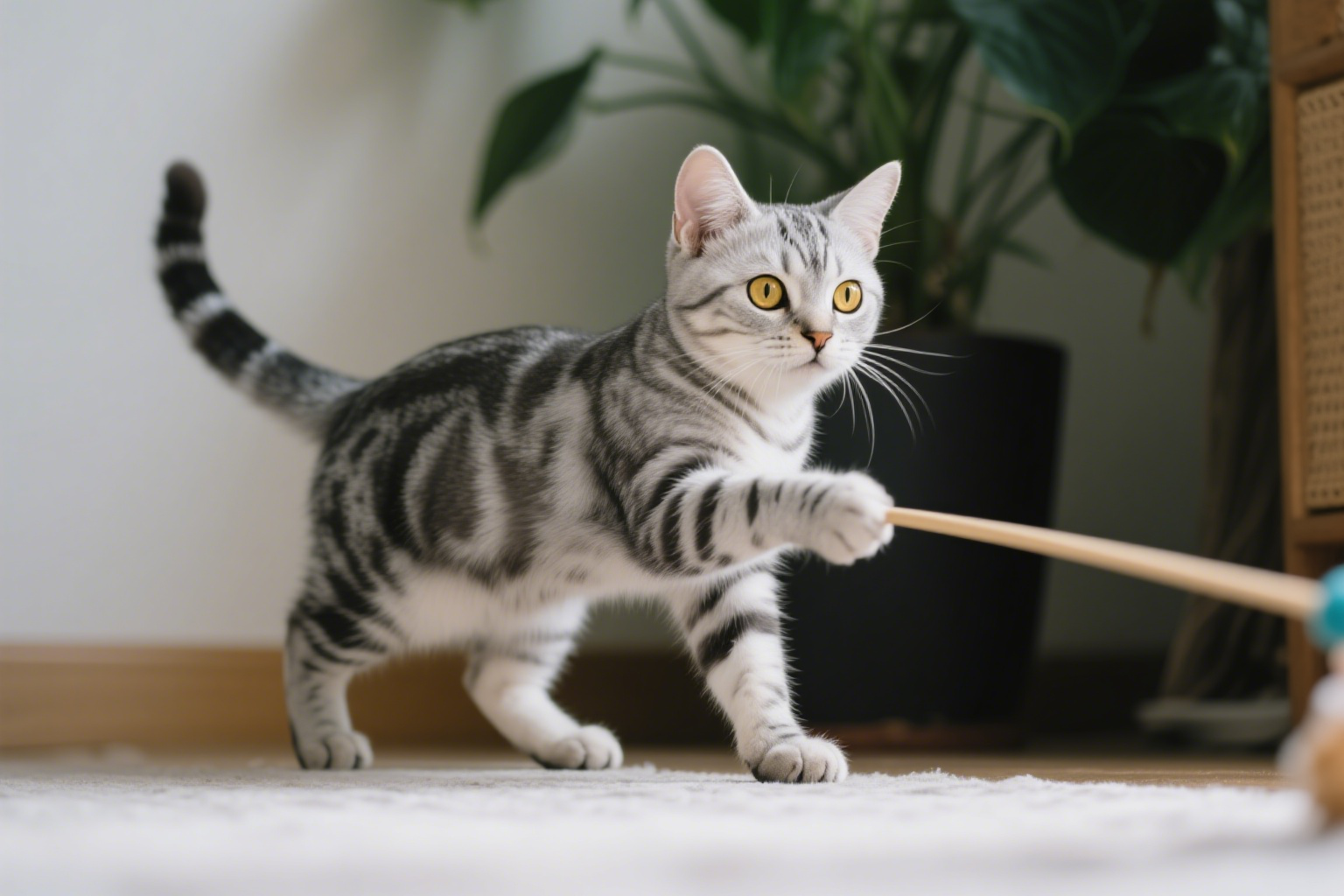At first glance, the American Shorthair and the British Shorthair seem like long-lost cousins. Both are robust, round-faced, and renowned for their easygoing nature. But when you’re deciding which of these charming cats to bring into your home, the subtle differences in their personality, care needs, and even their history become incredibly important.
So, you’re faced with the classic dilemma: American Shorthair vs. British Shorthair. Which one is the right fit for your family and lifestyle?
At AptPaws, we believe in going beyond the surface. This is not just a list of traits; it’s a practical cat breed comparison designed to help you make a truly informed decision. Let’s break it down, head-to-head.
Table of Contents
A Tale of Two Continents: A Quick History
Understanding where they come from gives us the first clue to their differences.
- The American Shorthair: Think of them as the hardworking, adaptable pioneers. Their ancestors arrived in North America on ships like the Mayflower, prized for their skills as rodent hunters. They are a “natural” breed, shaped by centuries of adapting to a new world. They are true survivors.
- The British Shorthair: Imagine them as the calm, dignified gentlemen of the cat world. They are one of the UK’s oldest breeds, believed to have been brought by the Romans. They were selectively bred in the late 19th century to have a specific plush coat and rounded “teddy-bear” appearance.
This history shapes everything from their build to their personality.
Head-to-Head: A Practical Comparison Chart
| Feature | American Shorthair (ASH) | British Shorthair (BSH) | The AptPaws Verdict |
| Body & Build | Muscular, athletic, “working cat” build. Medium-to-large with a slightly longer face and frame. | Dense, “cobby,” and rounded. Massive chest, short legs, and a round head with chubby cheeks. A true teddy bear. | The BSH looks softer and rounder, while the ASH has a more classic, powerful “cat” shape. |
| Personality | Playful, curious, and adaptable. Retains a bit of their hunting instinct. More outgoing with strangers. | Calm, placid, and undemanding. Famously low-energy and reserved. Prefers quiet observation. | Winner for active families: ASH. Winner for quiet apartments: BSH. |
| Affection Level | Enjoys being near their people and interactive play, but not a dedicated lap cat. | Affectionate but not clingy. They dislike being picked up but will happily sit beside you for hours. | If you want a lap cat, neither is a perfect fit, but the BSH is more content with calm companionship. |
| Energy & Play | Higher. Needs regular interactive play to satisfy their hunter’s mind. Enjoys puzzle toys. | Lower. Content with short, gentle play sessions followed by long naps. Famously laid-back. | This is a key difference. The ASH requires more mental and physical stimulation. |
| Grooming Needs | Very low. A quick brush once a week is usually sufficient to handle their short, hard coat. | Low, but higher than the ASH. Their dense, plush coat needs brushing 2-3 times a week to prevent matting. | Both are easy, but the ASH is slightly lower maintenance. |
| Health & Lifespan | Exceptionally healthy and robust. Known for their long lifespan (15-20 years). | Generally healthy, but prone to specific genetic conditions like hypertrophic cardiomyopathy (HCM) and polycystic kidney disease (PKD). Lifespan is 12-17 years. | The ASH is widely considered one of the hardiest and healthiest pedigreed cat breeds. |
Diving Deeper: Which Cat Fits Your Lifestyle?
Numbers and facts are helpful, but the best decision comes from picturing these cats in your daily life.
You might be a perfect match for an American Shorthair if…

- You have a busy, active household with kids or other pets. Their adaptable nature allows them to go with the flow.
- You enjoy interactive playtime and want a cat that will actively engage with toys.
- You appreciate a healthy, low-maintenance breed with a strong, independent streak.
- You want a companion who is social and friendly, but not constantly demanding your attention.
The American Shorthair is the ideal, well-rounded family cat.
You might be a perfect match for a British Shorthair if…
- You live in a smaller, quieter apartment and value a peaceful environment.
- You work long hours and want a cat that is calm and composed while you’re away.
- Your ideal evening involves a cat sitting calmly next to you on the couch, not climbing the curtains.
- You adore that “teddy bear” look and don’t mind the slightly increased grooming commitment.
The British Shorthair is the ultimate zen master of the cat world.
Frequently Asked Questions (FAQ)
Q: Are both breeds good with children?
A: Yes, both are known for being patient and tolerant, but the American Shorthair’s slightly more playful and outgoing nature often makes it a better fit for homes with active children.
Q: Which breed is more expensive?
A: Generally, the British Shorthair is more expensive to purchase from a reputable breeder due to their popularity and specific appearance standards.
Q. Is there a big difference in size?
A. They can overlap, but a fully grown male British Shorthair is often noticeably heavier and more “cobby” than a male American Shorthair, who tends to be longer and more athletic in build.
The Final Verdict: It’s About Energy, Not Nationality
When choosing between the American Shorthair vs. British Shorthair, the deciding factor should be energy and lifestyle compatibility.
- Choose the American Shorthair for adaptability, playful energy, and a classic, robust family companion.
- Choose the British Shorthair for calm, quiet companionship, a placid nature, and an adorably round, living teddy bear.
No matter which you choose, you are bringing home a wonderful, historically significant, and loving breed. This practical cat breed comparison is just the first step—the next is to find a responsible breeder or rescue and get ready for years of purrs and head boops.